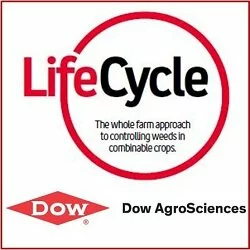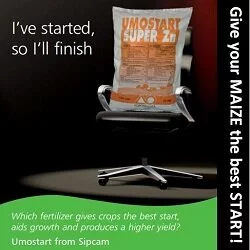Farming in Ukraine continues despite the threat of war
While a full on war hasn’t quite broken out the situation in eastern Ukraine continues to teeter on the brink of something tense but no one seems quite sure what.
Various official buildings and offices are being taken over by pro-Russian, pro-separatist groups who rally around a single issue agenda of self-rule and have a general distrust of the interim Government in Kiev.
Shots have been fired with several deaths reported, journalists have been kidnapped, so to have international military observers (whatever they are), some bodies have turned up with signs of torture and pro-Ukraine and pro-Russia groups are clashing on the streets with bloody results.
Recently the mayor of Kharkiv was shot and is now in critical condition in what appeared to be an assassination attempt aimed at destabilising the situation further.
Russia is widely thought to be behind the separatists or at least the former disgraced Ukrainian President in exile in Russia where he ran to with $32 billion which he is now using to fund the separatists but as yet no one has been able to produce conclusive proof that Russia is directly involved.
I’m sure they are but only in the same way the US is directly involved supporting the other side.
That’s the problem with geo-politics, you never have the full picture and it’s very easy to run to simplistic conclusions about who are the goodies and who are the baddies.
On a positive note events haven’t yet spiralled out of control and I assume the longer it goes on the less likely it is for the situation to break down completely.
But then again I’m a farmer not a strategic analyst so don’t blame me if I get it wrong.
On a further positive note there has been a series of rapid fire announcements coming from the Ministry of Agriculture in Kiev all seemingly sensible and geared towards making business easier, more transparent and aimed at encouraging investment in to the sector.
Some of the initiatives include EU trade preferences for Ukrainian exporters; the introduction of minimum term on agricultural land leases; deregulation of the market for pesticides; cancelled grain and granary certification; develop organic production and exports; National Bank provided lending support and a simplified procedure of agricultural land allocation.
Loading Nitrogen
Planting Sunflowers
I get the impression that the new Government, which boasts the highest ever share of top and mid-level government officials with western degrees and international business experience are actually trying to do something sensible and effective.
Recent rain in central and western regions helped the over-wintered crops and newly planted spring crops and they are looking very good at the moment. Crops further east are starting to show signs of stress from a lack of water.
Winter wheat is around GS30-32 (pseudo stem erect, 2nd node detectable) and winter oilseed rape is at early to mid-flower.
The season is about twenty days earlier than last year which will have the effect of increasing the yield potential for all crops assuming the season ahead is conducive to growing. However any yield potential will be restricted by a lack of finance, inflation, exchange rate fluctuations and general uncertainty which will discourage a high level of investment in to this year’s crop, particularly fertiliser.
Gas prices going up (Russia supplies Ukraine with gas) will make grain drying expensive so I anticipate a drop in maize planting to be replaced with sunflower or even fallow. We are about half way through sunflower planting and about a third of the maize crop is now in the ground.
Crop prices have moved upwards on the back of the continued uncertainty in Ukraine and cold weather in the US which is good news if you still have crop to sell.
The farming clock keeps turning regardless of what Putin, Obama and the rest get up to.











Add a comment
You must be logged in to post a comment.